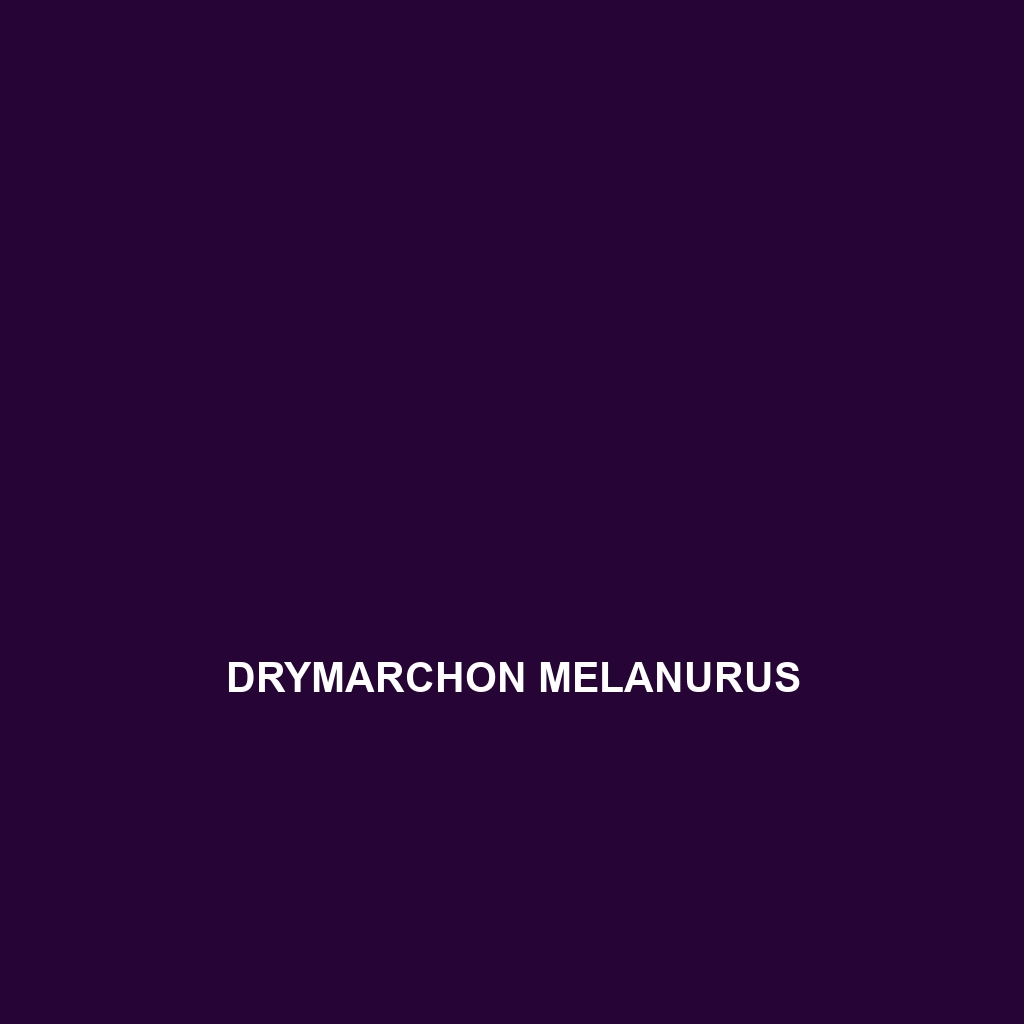Common Name
Drymarchon margaritae
Scientific Name
Drymarchon margaritae
Habitat
Drymarchon margaritae, commonly known as Margarita Island’s Indigo Snake, is primarily found in the lush rainforests and deciduous forests of Margarita Island in Venezuela. This species thrives in humid, tropical climates characterized by abundant rainfall and warm temperatures year-round. The snakes can often be spotted near coastal regions, showcasing a preference for environments that offer both terrestrial and marine habitats. These adaptable reptiles are frequently associated with regions constituting rich biodiversity, such as savannas and temperate forests, providing ample opportunities for foraging and shelter.
Physical Characteristics
Physically, Drymarchon margaritae is a striking reptile characterized by its elongated body that can reach lengths of up to 2 meters (approximately 6.5 feet). Its coloration varies from deep blue to glossy black, often shimmering with iridescence when exposed to sunlight. The snake features a distinctive head with minimal differentiation from its neck, promoting streamlined hunting. Unique among the species, Drymarchon margaritae also exhibits small, smooth scales which contribute to its agile movement through dense underbrush. The combination of size and coloration makes it an impressive and easily recognizable sight in its native habitat.
Behavior
Drymarchon margaritae exhibits fascinating behaviors that intrigue zoologists and enthusiasts alike. Primarily diurnal, these snakes are known for their active daytime hunting, although some individuals may choose to be nocturnal, especially during warmer months. Socially, they are solitary creatures but may congregate during the mating season. Interestingly, they demonstrate unique thermoregulation strategies, basking in the sun to regulate their body temperature. Their mating rituals often include elaborate courtship displays, where males engage in combat to win the right to mate with a female. Watching these dynamic interactions adds to the allure of the species.
Diet
As opportunistic feeders, Drymarchon margaritae is classified as a carnivore. Its diet primarily consists of small mammals, birds, and other smaller reptiles. The species is known for its agility and hunting prowess, utilizing its speed and stealth to ambush prey effectively. They employ constriction as their primary method for subduing prey, making them efficient predators in their ecological niche. The diet is rich in protein, which is essential for growth and reproductive success, thereby supporting their health in the varied environments of Margarita Island.
Reproduction
The reproductive cycle of Drymarchon margaritae is heavily dependent on the seasonal climate. Mating usually occurs during the rainy season when temperatures and humidity levels are optimal. The gestation period lasts approximately 60-90 days, after which females lay between 15 to 25 eggs. The young snakes hatch in late summer, fully dependent on their environment for survival as they receive no parental care post-hatching. This reproductive strategy minimizes resource investment from the mother, ensuring she can quickly recuperate for future breeding seasons.
Conservation Status
According to the International Union for Conservation of Nature (IUCN), Drymarchon margaritae is currently classified as ‘Vulnerable’. The primary threats to its population stem from habitat destruction due to deforestation and urban expansion. Conservation efforts are underway to protect the remaining rainforest habitats on Margarita Island, focusing on preserving biodiversity and restoring natural ecosystems. Increased awareness and education regarding the ecological significance of snakes like Drymarchon margaritae are also vital in ensuring their survival in the wild.
Interesting Facts
One of the most interesting aspects of Drymarchon margaritae is its remarkable ability to mimic other species, a behavior that helps it evade predators and surprise prey. Moreover, this snake exhibits a unique physiological adaptation allowing it to tolerate small amounts of toxins from its prey, which is uncommon among reptiles. These facts highlight the evolutionary advantages that contribute to its survival in a complex ecosystem.
Role in Ecosystem
Drymarchon margaritae plays a critical role as a predator within its ecosystem, helping to regulate populations of small mammals and birds, thereby maintaining ecological balance. As a component of the food web, it contributes to the health of its environment by controlling prey populations and serving as a food source for larger predators. Its presence in various habitats underscores its importance as a keystone species, essential for sustaining the dynamic equilibrium of the ecosystem it inhabits.
